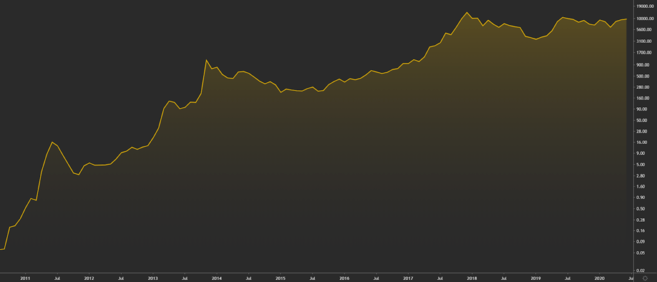About Lesson
A bull market (or bull run) is a state of a financial market where prices are rising. The term bull market is often used in the context of the stock market. However, it can be used in any financial market – including Forex, bonds, commodities, real estate, and cryptocurrencies. Besides, a bull market may also refer to a specific asset such as Bitcoin, Ethereum, or BNB. It could even refer to a sector, such as utility tokens, privacy coins, or biotech stocks.
You may have heard traders from Wall Street use the terms “bullish” and “bearish.” When a trader says they are bullish on a market, it means that they expect prices to rise. When they are bearish, they expect prices to decline.
Being bullish can often mean that they are also long that market, though that may not necessarily be the case. Being bullish may not necessarily mean that a long trade opportunity is present right now, just that prices are rising or are expected to rise.
It’s also worth noting that a bull market doesn’t mean that prices don’t fall or fluctuate. This is why it’s more sensible to consider bull markets on larger time frames. In this sense, bull markets will contain periods of decline or consolidation without breaking the major market trend. Take a look at the Bitcoin chart below. While there are periods of decline, and a few violent market crashes, it has been in a major uptrend since its inception.

The Bitcoin price chart (2010-2020).
So, in this sense, the definition of a bull market depends on what time frame we’re talking about. Generally, when we’re using the term bull market, we are talking about a time frame of months or years. As with other market analysis techniques, higher time frame trends will have more validity than lower time frame trends.
As such, there may be prolonged periods of decline in a high timeframe bull market. These counter-trend price movements have a notoriety for being especially volatile – though this can vary greatly.